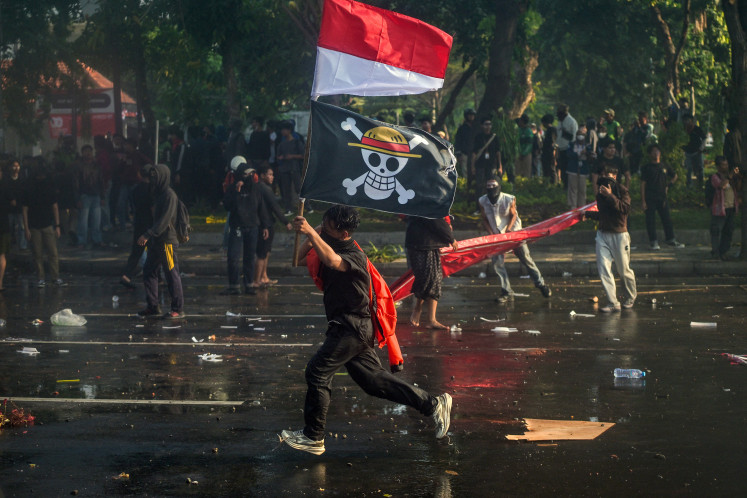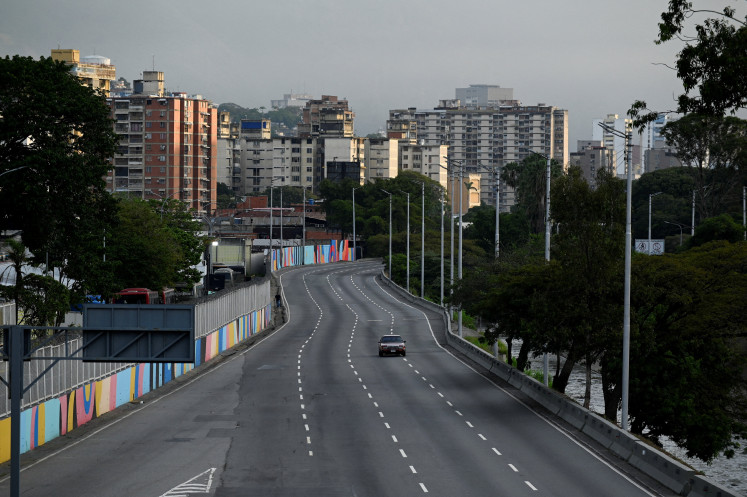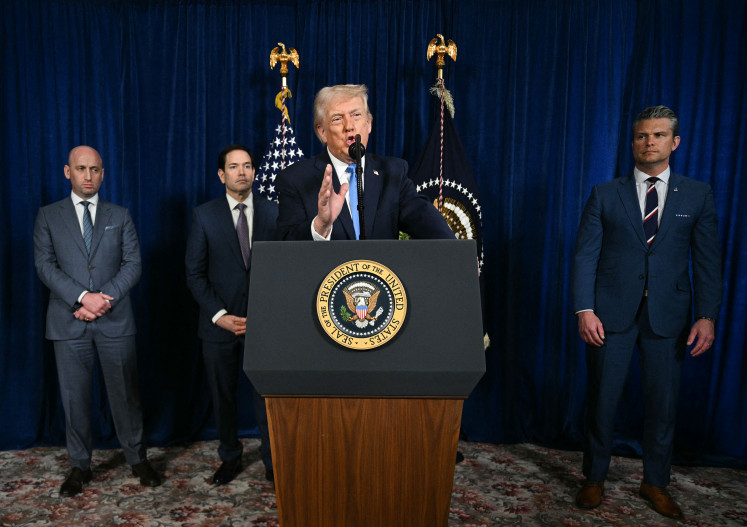Popular Reads
Top Results
Can't find what you're looking for?
View all search resultsPopular Reads
Top Results
Can't find what you're looking for?
View all search resultsWould a call for accountability ever be heard?
Jess Melvin’s exemplary book, The Army and the Indonesian Genocide: Mechanics of Mass Murder, published by Routledge in 2018, could be seen as a call for state accountability concerning the mass killings of 1965-1966. The call for accountability is essentially a call for justice. But would that call ever be heard? So far, there are no signs of a strong political will to reopen the case of 1965.
Change text size
Gift Premium Articles
to Anyone
J
ess Melvin’s exemplary book, The Army and the Indonesian Genocide: Mechanics of Mass Murder, published by Routledge in 2018, could be seen as a call for state accountability concerning the mass killings of 1965-1966. The call for accountability is essentially a call for justice. But would that call ever be heard? The author seems pessimistic. The historical findings presented in her book are apparently not strong enough in legal terms. The author asserts, “There is no evidence the military pre-planned the genocide per se”. If so, then the call and hope for accountability of the state would be fruitless for a long time to come. So far, there are no signs of a strong political will to reopen the case of 1965.
Up to 1 million suspected communists were murdered under the watch of the state during 1965-1966 as a part of an anti-communist campaign. This means the mass killings remain unresolved today, legally. But for the long advent to come to pass seems to be a question of if, not when.
The book is about genocide in Aceh. It recounts the violent events of 1965-66, using mainly the military’s own documents, along with stories of 70 local survivors, perpetrators and eyewitnesses. The book begins with an introduction of the so-called Indonesian genocide files, or 3,000 pages of top-secret military documents obtained from the former National Intelligence Agency’s (BIN) archives in Banda Aceh. It then explains why the bloodletting of 1965-1966 should be perceived as genocide.
Subsequently, the book tells stories that precisely support the key proposition of the book about the military’s involvement in the mass killings. For example, it is mentioned that the military was already in extensive preparations to take over control of the state during the lead-up to Oct. 1, 1965, and that the order to kill the suspected communists also came from the military. The book then concludes with a critical assessment of the anatomy of a genocide, which again reemphasizes the centrality of the theme of genocide. Partly for this reason, Melvin’s book could be seen as an important breakthrough in the study of the genocide of 1965. Using the case study of the province of Aceh, the author shows new aspects of the national decision-making process that dictated the violent campaigns against suspected communists after the event, called G30S (Sept. 30 Movement).
The author’s access to the Indonesian genocide files is proof of her combined bravery, communication skills and luck, as well as an indication of the culture of openness slowly emerging within the military. The documents are evidence of the military’s role in the anti-communist campaigns of 1965-1966. They counter the Indonesian Military’s (TNI) denial of any direct and indirect involvement in the killings, instead suggesting that the killing of suspected communists was spontaneously committed by the people themselves out of anger toward — and fear of — the communists.
Through careful analysis of military documents, the author concludes that military denial is not only unsubstantiated, but is also an attempt to cover up its involvement in the killings, partly because of fear of accountability.
The author further proposes that the killing of suspected communists in the case of Aceh was the outcome of “a centralized, nation-wide campaign”. The author argues that according to the Indonesian genocide files, the killings were, in fact, described by the military as operasi penumpasan (annihilation operation) against the Indonesian Communist Party (PKI), the then-major political rival of the Armed Forces (Abri) for state power. This clearly suggests that the killings were a deliberate outcome of state policy and not a spontaneous violent reaction by the local people. The military clearly intended to destroy their political rivals. As such, the author argues that the killings can be understood as a case of genocide according to the definition of the 1948 Genocide Convention.
With reference to the top-secret military documents, the author was able to construct a logically convincing narrative of the Indonesian genocide in Aceh. Arguably, unlike previous scholars of 1965, the author developed a much firmer argumentation about the bloodletting of 1965-1966 as a genocide.
However, this conclusion of genocide may not be new to many Indonesian eyewitnesses and scholars. I strongly suspect, many in Indonesia knew all along that what happened in 1965-1966 was at best described as genocide. The author’s conclusion about the genocide can, therefore, be regarded as a reaffirmation of the unspoken knowledge in Indonesia concerning the mass killings of 1965-1966. Though the author’s ability to collect a mountain of top-secret military files in Aceh remains admirable, it is almost impossible to imagine an Indonesian researcher being given so many important military files without an intensive process of interrogation.
The author’s ability to access the top-secret military files could also be seen as an example of privileges foreign researchers sometimes enjoy in conducting research in Indonesia on sensitive topics such as 1965. At the same time, there has been much talk lately about restrictions on foreign researchers in Indonesia.
Again, would the call for state accountability ever be heard in legal terms? Even though the author seems pessimistic, I try to be optimistic. The old proverb, “Where there’s a will there’s a way”, is partly the basis of my optimism. If the state is determined to account for the mistakes of 1965-1966, it will find a way to accomplish it, regardless of the obstacles. As Indonesia continues to evolve and develop as a nation state, demands for the past to be revisited simply cannot be silenced.
The stakeholders, too, would have no better option than to accommodate the public call for state accountability. This, if it ever happens, would put a stop to the word “communist” being used negatively for political purposes during elections. Regardless, Melvin’s book can at least contribute to discussions between historians and legal experts on the possibility of calling the government and military into account for their involvement in the violent anti-communist campaigns post-1965.
***
Currently teaching Indonesian Studies at the Asia Institute, School of Arts, The University of Melbourne. He wrote his PhD thesis on ethnography of fear concerning 1965-1966.











